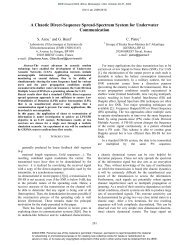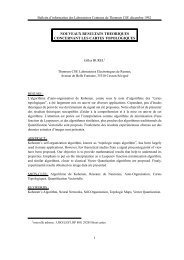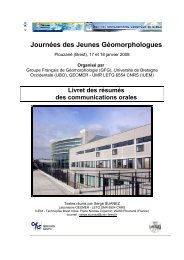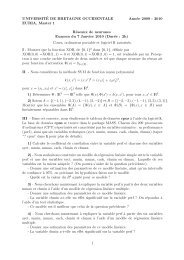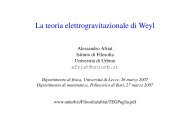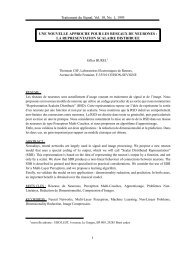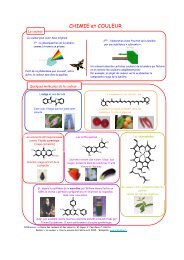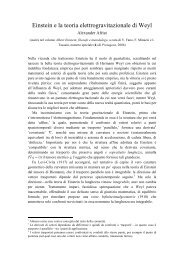Abstract 1 Introduction
Abstract 1 Introduction
Abstract 1 Introduction
Create successful ePaper yourself
Turn your PDF publications into a flip-book with our unique Google optimized e-Paper software.
Battleeld Atmospherics Conference (BAC’93), Nov 30 - Dec 2, 1993, Las Cruces, New Mexico, USA<br />
The neural network provides a class (vehicle or background), and a condence associated<br />
to this decision.<br />
All the local decisions are then fused to suppress multiple detections at close spatial<br />
locations. To achieve this task, we search for the strongly overlapping detections. Two<br />
detections are considered as strongly overlapping if the center of one window is included<br />
in the other window. For such congurations, we suppress the detection which has the<br />
lower condence.<br />
For experimentation, we have created a training base of 4647 images (1407 images<br />
of vehicles and 3240 images of backgrounds). It is good to have more backgrounds than<br />
vehicles in the training base, in order to keep the false alarm rate at a low level. MLP<br />
and LVQ networks provide comparable results. On a typical test sequence showing 3<br />
tanks moving at various distances, the 3 vehicles are detected almost on each image of the<br />
sequence, while two or three false alarms may appear stealthy. Since the location of these<br />
false alarms seem to be almost random, they might be suppressed by temporal analysis.<br />
6 Conclusion<br />
An approach to vehicle detection and classication on infra-red images has been<br />
proposed in this paper. The approach is based on learning by example and neural network<br />
techniques. Concerning classication, 6 classes have been dened: helicopter, truck,<br />
and 4 classes of tanks. A neural network has been trained to recognize these classes<br />
independently of vehicle orientation and environment conditions. Two kinds of neural<br />
networks have been compared: the multi-layer perceptron and Kohonen’s learning vector<br />
quantization. Experimental results obtained on 1400 examples show that a classication<br />
rate of 92% can be expected. An extension of this approach for detection purpose has been<br />
proposed. The image is analysed by multi-resolution scanning. For each resolution and<br />
each window location, the content of the window is normalized in size, average brightness,<br />
and contrast. Then, it is propagated through a neural network, which provides a decision<br />
(“vehicle” or “background”) and a condence measure. All the decisions are then fused<br />
across the various resolutions in order to suppress multiple detections at the same location.<br />
The fusion is based on analysis of condence.<br />
References<br />
[1] T. Kohonen, “Self-Organization and Associative Memory”, Springer-Verlag, 1984<br />
11



